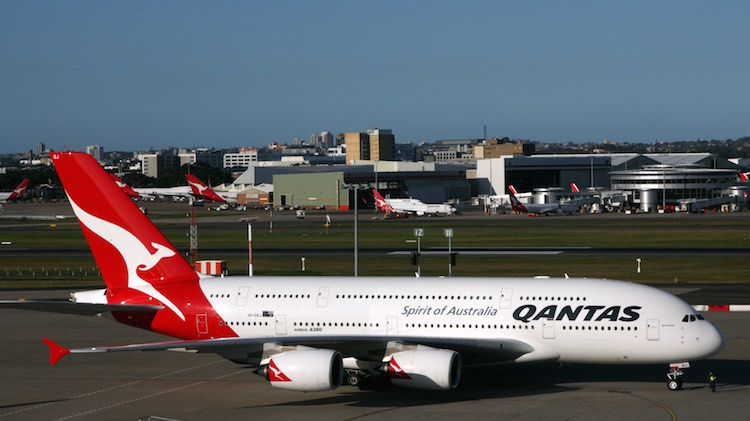Qantas chief executive Alan Joyce says investing in Australia’s airports will help boost tourism and bring improved returns for the nation’s airport operators.
However, Joyce stresses that investment should come from either government or the airport owners and operators rather than from the airlines that use the facilities.
“Our airports show that there are some eye-watering returns from investing in the right infrastructure,” Joyce said during a speech at the National Press Club in Canberra on Wednesday.
“Both government and infrastructure sectors have good, easy access to cheap capital. Investment in airports is an ideal way to boost economic growth.”
“The alternative of asking airlines to pre-fund infrastructure would simply mean costs being passed onto passengers for services that they won’t receive for years.”
“It is a bizarre kind of lay-by program for infrastructure and it can have a significant unintended consequences on tourism by adding incremental costs to people’s journey that eventually reaches a tipping point and then those tourists choose to go to another country instead.”
Joyce said supporting growth in tourism was a way for the economy to transition away from the expected reduction in mining investment that was expected to continue for at least the next couple of years.
“We now need to diversify the economy and build resilience,” Joyce said.
And that included giving those arriving into Australia a better first experience by improving customs and immigration services at the nation’s major airports.
Joyce said some passengers on a recent flight he was on from Hong Kong told him they faced “monstrous” queues after landing at Sydney Airport, while business leaders also told a similar story.
“That is not unique just in Sydney, that is what we are experiencing around the country,” Joyce said.
“Compare this to the US or Singapore, who have invested heavily in automation to cut down queues and make sure the first experience of their country is a more positive one.”
“There is a lot government and opposition can do with the tourism sector and the economy more broadly to make sure we can make the most of the opportunity.
“We need to continue to invest in tourism development, including infrastructure and marketing, however at a micro level we need to also address a few pain points for customers.”
Australia’s Department of Immigration and Border Protection earlier this year said it would roll out 92 SmartGates at eight international airports by mid-2016.
Another area Joyce said needed reconsideration was visa fees, with the soon-to-be-introduced multiple entry 10-year visa for Chinese citizens – an outcome from the recently concluded free trade agreement with China – just one example.
Australia is charging $1,000 for the visa, while the US charges $215 for a similar visa and Singapore’s 10-year visa costs $30.
“That’s $30 compared to our $1,000,” Joyce said.
“It is completely uncompetitive.”
Other visa categories have also risen in price. In the May budget, the Department of Immigration and Border Protection announced visa application charges would increase across a range of categories, with the measure to raise $103.4 million in 2015/16 and $437.1 million over the next four years.
From July 1, the cost of a visitor visa rose $5 to $135 (if processed overseas) or $340 (if processed in Australia).
The biggest hike in visa fees was in the Significant Investor Visa category, which jumped 50 per cent to $7,010.
The Department said the visa application fee for this category comprised a “very small component of the minimum $5 million of investments required under the significant investor visa category”.
There were no changes for electronic travel authorities (ETA), eVisa and refugee and humanitarian visas, the Department said.
Joyce enthusiastically backed the Australia-China free trade agreement and the Trans-Pacific Partnership.
The Qantas chief executive also called for the government to seek the “middle ground” as it pursued reform in areas such as industrial relations and tax.
Although the reforms would be difficult, particularly given the strong views held by the stakeholders involved, Joyce said that was “not a good reason to kick the can down the road”.
“As a first principle nobody wants anyone to be worse off,” Joyce said.
“Reforms should be geared towards making us a more prosperous nation overall.”











